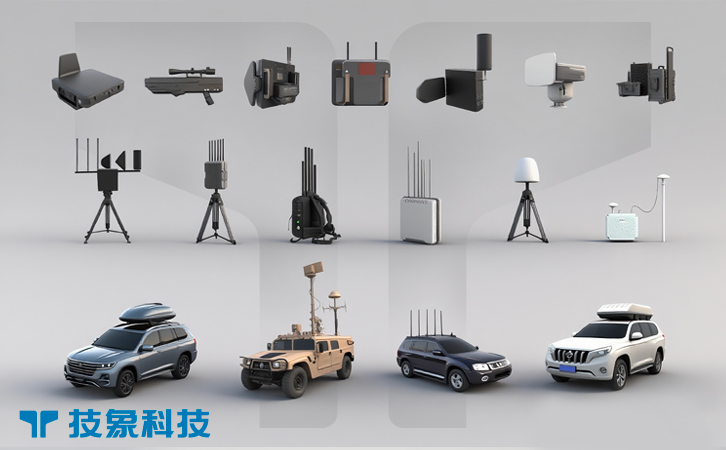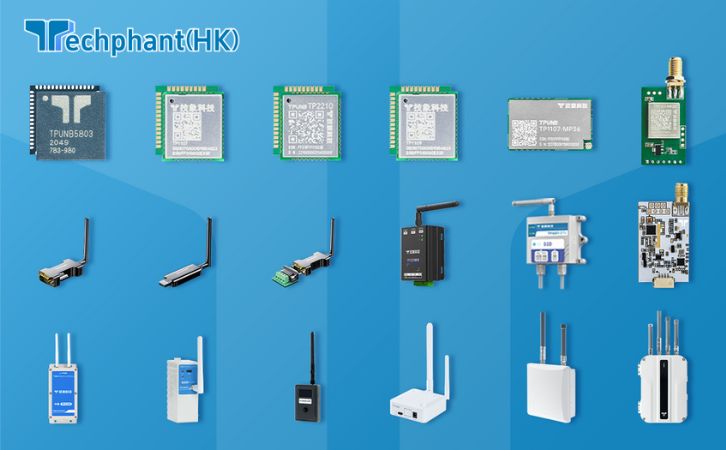Radar systems are a cornerstone of anti-UAV defense, providing robust detection capabilities for identifying and tracking drones in diverse environments. The range of radar detection for drones varies significantly based on factors such as radar type, frequency band, drone characteristics, and environmental conditions. Effective detection is critical for countering threats posed by unauthorized or malicious unmanned aerial vehicles (UAVs), from small consumer drones to sophisticated military UAVs. This article explores the factors influencing radar detection range, the frequency bands used, challenges in achieving reliable detection, and advancements enhancing range and performance, offering a comprehensive understanding of radar capabilities in anti-UAV systems.
I. Factors Influencing Radar Detection Range
The range at which radars can detect drones depends on several key factors. The radar’s power output and antenna design are primary determinants; higher power and larger antennas increase detection range by emitting stronger signals and receiving weaker reflections. For instance, high-powered military radars like the AN/TPQ-53 can detect drones at ranges up to 20 kilometers, while smaller, portable radars may be limited to 1-5 kilometers. The drone’s radar cross-section (RCS), which measures how reflective it is to radar waves, is another critical factor. Small consumer drones, with RCS as low as 0.01 square meters, are harder to detect than larger UAVs, reducing effective range.
Environmental conditions also play a significant role. In open terrains, radars achieve maximum range due to minimal obstructions, whereas urban environments with buildings, trees, or electronic interference can reduce range by scattering or attenuating signals. Weather conditions, such as heavy rain or fog, further degrade performance, particularly for high-frequency radars, by absorbing or scattering waves. The drone’s altitude and speed also affect detection; low-flying drones may evade long-range radars optimized for higher altitudes. These factors necessitate tailored radar configurations to balance range, sensitivity, and environmental adaptability for effective drone detection.
II. Frequency Bands and Their Impact on Range
Radar systems operate across various frequency bands, each with distinct implications for detection range and drone detection capabilities. The most common bands for drone detection are:
- X-band (8-12 GHz): Widely used for high-resolution detection, X-band radars offer ranges of 5-20 kilometers for small drones, depending on power and RCS. Their shorter wavelengths enable precise tracking but are susceptible to weather attenuation, limiting range in adverse conditions.
- Ku-band (12-18 GHz): These radars provide higher resolution than X-band, suitable for detecting micro-drones at ranges of 3-15 kilometers. Their range is slightly shorter due to higher atmospheric absorption, but they excel in urban settings requiring fine discrimination.
- L-band (1-2 GHz): Used for longer-range detection, L-band radars can detect drones up to 30-50 kilometers but struggle with small RCS targets due to lower resolution. They are ideal for wide-area surveillance in open environments.
- S-band (2-4 GHz): Offering a balance between range and resolution, S-band radars detect drones at 10-30 kilometers, making them versatile for both military and civilian applications.
For example, the Giraffe 4A radar, operating in the X-band, achieves a detection range of up to 20 kilometers for small drones, while L-band systems like the Thales Ground Master 200 extend to 40 kilometers for larger UAVs. The choice of frequency band depends on the operational context, with higher frequencies favoring precision and shorter ranges, and lower frequencies prioritizing extended range at the cost of resolution.
III. Challenges in Maximizing Detection Range
Achieving optimal radar detection range for drones is fraught with challenges. Small drones with low RCS are difficult to detect, as their minimal reflectivity blends with environmental clutter, such as birds or ground reflections. In urban areas, buildings and vehicles create multipath interference, reducing effective range by up to 50% compared to open terrains. For instance, a radar with a nominal range of 10 kilometers may be limited to 5 kilometers in a city due to signal scattering. Weather conditions, particularly rain or fog, attenuate high-frequency signals, further constraining range for X-band and Ku-band radars.
Another challenge is distinguishing drones from non-threatening objects. False positives, such as mistaking a flock of birds for a drone swarm, can overwhelm operators and reduce system reliability. Autonomous drones, which minimize RF emissions, rely on radar for detection, but their low-altitude flight paths can exploit terrain masking to evade long-range systems. Detecting drone swarms adds complexity, as multiple targets require simultaneous tracking, straining radar processing capabilities. These challenges necessitate advanced signal processing and multi-sensor integration to maintain effective detection ranges in real-world scenarios.
IV. Advancements Enhancing Radar Detection Range
Recent technological advancements are improving radar detection ranges for drones, addressing both range and reliability challenges. Phased-array radars, which electronically steer beams without mechanical movement, enhance range and tracking speed by focusing energy on specific sectors. For example, the Raytheon AN/TPQ-53 uses phased-array technology to detect drones at 20 kilometers with high accuracy. Frequency-modulated continuous wave (FMCW) radars, operating in X-band or Ku-band, improve range resolution for small drones, achieving detection at 5-10 kilometers even in cluttered environments.
AI and machine learning are transformative, enhancing range by improving signal processing and clutter rejection. AI algorithms analyze radar returns to differentiate drones from environmental noise, extending effective range by reducing false negatives. For instance, systems like DroneShield’s DroneSentry integrate AI to maintain detection ranges of up to 8 kilometers in urban settings. Multi-sensor fusion, combining radar with RF, EO/IR, and acoustic sensors, extends effective range by cross-verifying detections, compensating for radar limitations in adverse conditions. Emerging millimeter-wave radars (30-300 GHz) promise ultra-high resolution for micro-drone detection at short ranges (1-3 kilometers), with potential for longer ranges as technology matures. Integration with 5G networks further enhances range by enabling real-time data sharing across distributed radar units, creating wide-area detection networks.
Conclusion
The radar detection range for drones, typically spanning 1-50 kilometers depending on system and conditions, is shaped by factors like radar power, frequency band, drone RCS, and environmental variables. X-band and Ku-band radars offer high-resolution detection at moderate ranges, while L-band and S-band systems prioritize longer ranges for broader surveillance. Challenges like clutter, weather, and small RCS necessitate advanced solutions, which are being addressed through phased-array technology, AI-driven processing, and multi-sensor integration. As drone threats evolve, ongoing innovations in radar design and connectivity will continue to enhance detection ranges, ensuring robust airspace security for military, civilian, and commercial applications.



